Lothians
This section covers West Lothian (Linlithgowshire), East Lothian (Haddingtonshire) and Midlothian
Other resources on this site:
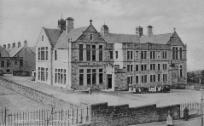
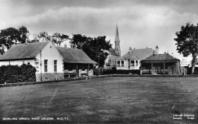
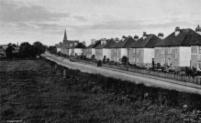
L-R, Armadale School c1914, Bowling Green West Calder, Burngrange Cottages West Calder, c1930s.
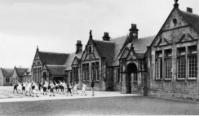
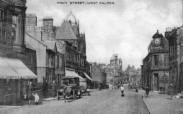
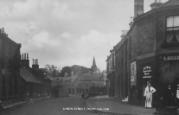
L-R- West Calder High School, Main Street West Calder c1930s, Union St West Calder c1910.
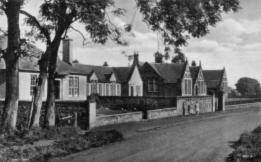

L-R West Calder School c1930s, West Calder Railway Station
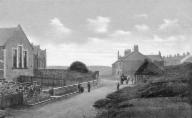
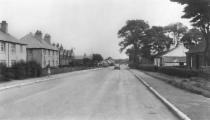
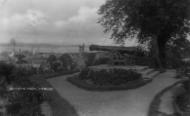
L-R Addiewell School c1912, Bellsquarry c1940; Victoria Park Bo'ness c1920
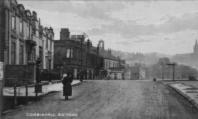
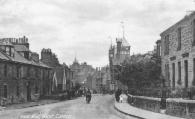
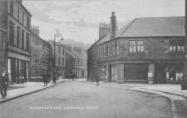
L-R Corbiehall, Bo'ness; East End, West Calder c1910; Grangepans
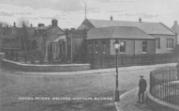
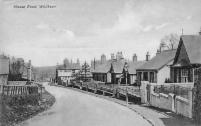
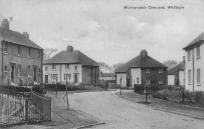
L-R Kinneil Miners Welfare Institute, Bo'ness; Manse Rd, Whitburn c1925; Murraysgate Cres, Whitburn c1927
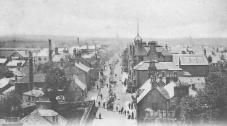
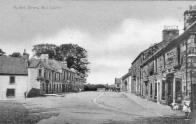
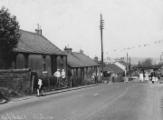
L-R West Calder c1910; Market St Mid Calder c1910; Uphall Station
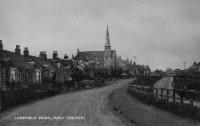
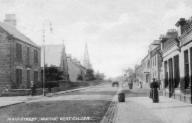
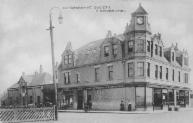
L-R Limefield Rd, West Calder c1921; Main St, West Calder; Cooperative Society, Pumpherston
Gazetteer Descriptions
A topographical dictionary of Scotland, Samuel Lewis, 1846
Armadale, a village, in the parish of Bathgate, county of Linlithgow, 2 miles (W.) from Bathgate; containing 121 inhabitants. This place derives its name from an estate in the vicinity, which once belonged to a senator in the college of justice whose title was Lord Armadale. The road from Linlithgow to Whitburn runs through the village, and it is also situated on the road between Edinburgh and Glasgow, from which cities it is nearly equidistant; the population is employed in agriculture, and in the mines and quarries of the neighbourhood.
Bonnyrigg, a village, in the parish of Cockpen, county of Edinburgh, 3 miles (N. W.) from Cockpen; containing 650 inhabitants. It is a considerable village, situated on the road between Laswade and Cockpen, in the northern part of the parish; and in the vicinity, are extensive coal-works. A school has been established here.
Langrigg, a village, in the parish of Whitburn, county of Linlithgow, 1 1/2 mile (S. by E.) from Whitburn; containing 225 inhabitants. It lies on the high road from Wilsontown to Linlithgow. Between this village and that of Fauldhouse is a valuable field of blackband ironstone, called the Crofthead, and lately discovered; it has led to great enterprise and industry in the district, of which the aspect has, in consequence, remarkably improved. In the neighbourhood of the village is a good stone-quarry. One of two libraries in the parish is at Langrigg.
Loanhead, a village, in the parish of Lasswade, county of Edinburgh, 1 1/4mile (W. by S.) from Lasswade; containing 810 inhabitants. This is a rural and pleasant village, situated a little east of the high road from Liberton to Penicuick, and is a favourite retreat in summer for families from the larger and more busy towns around, particularly Edinburgh, from which city it is distant between four and five miles. It contains a number of good houses and several handsome villas; and possesses the advantage, not usual in such small places, of an excellent supply of water, brought in pipes. In the neighbourhood are collieries, considerable paper-mills, and a brewery; employing a large part of the population. There is a Cameronian meeting-house; and the visitors have the benefit of a good subscription library.
Longniddry, a village, in the parish of Gladsmuir, county of Haddington, 4 miles (W. by N.) from Haddington; containing 216 inhabitants. This village, which is situated within half a mile of the Frith of Forth, is irregularly built. It appears to have been once of much greater extent than at present; a considerable portion of the site of ancient buildings is now in a state of cultivation; and in the memory of persons yet living there were several ranges of houses, the foundations of which have been obliterated by the plough. Part of the old mansion of the Douglases, here, is still occupied by a tenant; and near it are the remains of the ancient chapel, called, from his having preached in it, John Knox's Kirk. A school, where about sixty children are instructed, has been long maintained in the village; the master has a house and garden rent free, with a payment of £4 per annum from the Earl of Wemyss and the proprietor, in addition to the fees.
Lugton, a village, in the parish of Dalkeith, county of Edinburgh, half a mile (N. W.) from Dalkeith; containing 230 inhabitants. The barony of Lugton was taken, in 1633, from the old parish of Melville, and annexed to this parish. The village is situated on the high road from Dalkeith to Edinburgh, and on the banks of the North Esk, over which river is a bridge, built in 1765, and widened in 1816, when, also, the approaches to it were improved. The inhabitants of the place are chiefly colliers, and a school has been established for their children.
Millerhill, Easter and Wester, villages, in the parish of Newton, county of Edinburgh, 1½ mile (N. W. by N.) from Dalkeith; the one containing 220, and the other 70, inhabitants. They lie in the south-eastern part of the parish, a short distance east of the village of Newton, and are chiefly inhabited by persons engaged in the coal-mines of the district.
Monktonhall, a village, in the parish of Inveresk, county of Edinburgh; 1 mile (S. S. W.) from Musselburgh; containing 117 inhabitants. This place lies nearly in the heart of the parish, a little to the south of the Esk river; it is the seat of one of the principal collieries in the parish, and its inhabitants are almost exclusively workers in the mines. About a mile above the village, on the Dalkeith road, stands Monkton House, said to have been built by the famous General Monk, and to have been his favourite Scottish residence. This venerable structure, now used as farm-offices, stands in the court of the present mansion-house, the property of Sir John Hope, Bart. The gardens of Monktonhall, and those of Stoneyhill, in the vicinity, appear to have been among the earliest in Scotland.
Newbattle, a parish, in the county of Edinburgh; containing, with the villages of Easthouses and Newton-Grange, 2033 inhabitants, of whom 159 are in the village of Newbattle, 1 mile (S.) from Dalkeith. This place, which forms a kind of suburb to the town of Dalkeith, originated in the foundation of a monastery by David I. in 1140, which he endowed for brethren of the Cistercian order, from the abbey of Melrose. The institution continued to flourish till the Dissolution, when its revenue was returned at £1413 in money, and various payments in kind. At the Reformation, the small parish of Maisterton was joined to this parish, and the church of the abbey was made parochial. The patronage of the united church, with the lands of Maisterton, and the manor of Newbattle, was held by Mark Kerr, the last commendator of the abbey, and ancestor of the Lothian family, who died in 1584, and was succeeded by his son, Mark, who in 1587 obtained from James VI. a patent erecting these lands into a barony, and who in 1606 was created Earl of Lothian. The estate has since that time remained in the family, and is now the property of the eighth Marquess of Lothian. The parish, part of which is beautifully situated in a romantic valley watered by the South Esk, is about four miles in length, and forms an irregular triangular area of eight square miles, containing something more than 5000 acres, of which 4700 are arable, 300 woodland and plantations, and the remainder waste. The surface is finely varied, the main part rising gradually from the margin of the river, and terminating in a bold ridge, of which the highest point has an elevation of 700 feet above the level of the sea, and commands an extensive and richly diversified prospect over the adjacent country.
The soil in the lower lands is luxuriantly rich, and of great depth; but in the higher districts, comparatively light and shallow. The system of agriculture is in an improved state, and the rotation plan is prevalent; the crops are, wheat, oats, barley, beans, potatoes, and turnips. The farm-buildings, however, are generally old, and in very indifferent condition, inferior to many in the vicinity; and the few inclosures might be greatly bettered. The woods are under good management, and are regularly thinned and pruned; they consist of oak, ash, elm, beech, plane, and various kinds of fir. The plantations, also, are mostly in a flourishing state. The substrata are chiefly coal and limestone, which are both abundant and of good quality; and the former is wrought to a very great extent by the Marquess of Lothian, whose mines of parrot-coal of the finest description are apparently inexhaustible. The rateable annual value of the parish is £12,706. Newbattle Abbey, the seat of the marquess, is an imposing mansion erected on the site of the ancient monastery, and beautifully situated on the north bank of the South Esk, in a well-wooded park. The mansion contains many stately apartments; an extensive and valuable library, enriched with splendidly illuminated missals and curious manuscripts formerly belonging to the abbey; a large collection of paintings by the first masters, and numerous family portaits. The grounds are tastefully laid out, and embellished with thriving plantations, and with many trees of ancient and majestic growth, among which are some beeches of extraordinary size, planted by the monks. Within the park is an old bridge of one arch over the river, called the Maiden Bridge, said to have been erected by a young lady whose lover was drowned while attempting to ford the stream at this spot, and which, now overgrown with ivy, has a strikingly romantic appearance. In the pavement of the hall of the mansion was once a brass plate, in the form of a foot, inserted to mark out the spot on which His Majesty George IV. first trod on entering the mansion, when he visited the marquess in 1822. Woodburn, late the residence of Mr. Ker, is a handsome modern house on the east bank of the river, pleasantly situated in a well-planted demesne, and commanding some fine views.
The village consists chiefly of old and irregularlybuilt houses, inhabited by persons engaged in the various handicraft trades requisite for the wants of the neighbourhood, and of cottages for agricultural labourers. Easthouses, in its vicinity, is inhabited by persons employed in the collieries of the Marquess of Lothian, which are very extensive, and from which a line of railway, one mile and a half in length, has been formed at the expense of his lordship, to Dalhousie-Mains, where it joins the Edinburgh and Dalkeith railway, which thence proceeds north-westward. In its progress it is carried across a deep ravine of most romantic appearance, by a spacious bridge of cast-iron, of three arches resting on stone piers, sixty-five feet each in span, and of which the central arch, over the river, is seventy feet high. There are one or two other villages and several rural hamlets. Facility of communication with Dalkeith and the neighbouring towns is afforded by the railway, and by roads kept in tolerable repair. The ecclesiastical affairs are under the superintendence of the presbytery of Dalkeith and synod of Lothian and Tweeddale: the minister's stipend is £188, with a manse, and a glebe valued at £21 per annum; patron, the Marquess. The church, situated not far from the river, near the principal lodge of Newbattle Abbey, was erected in 1727, and is a plain structure containing 400 sittings, a number that might be considerably increased by the erection of a gallery. There is also a regular minister at Stobhill, where a church has very recently been raised, adequate funds having been subscribed. The parochial school, to the west of Easthouses, is well conducted, and attended by about eighty children; the master has a salary of £34. 4., with a house and garden, and the fees average £25 per annum. A school in the village of Easthouses, an infant school likewise there, and a school for girls at Newton-Grange, are all specially attached to the coalworks; the scholars are numerous, and the teachers partly paid by salaries and partly from the wages of the colliers. There are also some friendly societies, which operate to diminish the number of applicants for parochial relief. On the summit of the ridge rising from the bank of the river, are distinct traces of a Roman camp about three acres in extent, the area of which has been planted with trees; and to the north of the abbey was till lately a conical mount, ninety feet in diameter at the base, and thirty feet high, on the removal of which, for the erection of the present mansion, a stone coffin seven feet long was found, containing a human skull. Archbishop Leighton was for some time minister of this parish, to which he was inducted in 1648.
Newton, a parish, in the county of Edinburgh, 2 miles (N. W.) from Dalkeith; containing, with the villages or hamlets of Adamsrow, Claybarns, Edmonstone, New Engine, Old Engine, Easter and Wester Millerhill, Pentecox, Redrow, Sherriffhall-Engine, and Squaretown, and the hamlet of Backdean, 1743 inhabitants. This parish, including the old parish of Woolmet, united with it at the Reformation, is about two miles in length and a mile and a half in breadth; comprising an area of 1256 acres, nearly the whole of which are under profitable cultivation. The surface is generally level, and the soil fertile; the scenery is finely varied, and the tract of country between this place and Edinburgh abounds with interesting features. The substratum is chiefly coal, of which there are several mines in extensive operation; and freestone is found at a great depth below the surface, but no regular quarries have yet been opened. In the strata of coal occur various geological specimens, some of which are very beautiful. The collieries have been worked for more than a century, and afford employment to about 1000 of the population. The rateable annual value of the parish is £9739. Edmonstone House, the seat of John Wauchop, Esq., is a handsome modern mansion, situated in an ample demesne tastefully laid out, and embellished with thriving plantations. Newton House, also of modern erection, is a neat mansion pleasantly seated; and Woolmet House, an ancient mansion, retaining much of its original character, is also a pleasant residence. There are several villages, chiefly inhabited by persons engaged in the coal-mines, of which the principal are Edmonstone, Easter Millerhill, Wester Millerhill, and Adamsrow; and various small hamlets, among which are Little France and Sheriffhall. Some others, from the exhaustion of the mines wherein the inhabitants were employed, have become extinct. The Edinburgh and Dalkeith railway intersects the parish.
The ecclesiastical affairs are under the superintendence of the presbytery of Dalkeith and synod of Lothian and Tweeddale; patron, Mr. Wauchop. The minister's stipend is £148.3., with £4. 8. 10. for communion elements, and a rent-charge of £5.11.2. on lands in Edmonstone, a manse, a glebe valued at £20 per annum, and the interest of capital paid for the purchase of the coal under the glebe, producing £115. 6. 4., and making the whole income equivalent to £293. 9. 4. per annum. The church, rebuilt, with the exception of the ancient tower, in 1742, and repaired and reseated in 1819, is a neat structure, but containing only 430 sittings. Owing to the accommodation being thus limited, and from the great expense of increasing it by enlargement, it was lately in contemplation to raise a new church; but none has been erected. The chapel at Edmonstone is a handsome structure in the later English style, now used, however, only as a mausoleum by the Wauchops. The parochial school, to which a good library is attached, is well conducted, and is attended by about 180 children; the master has a salary of £34. 4., with a house and garden; and the fees, with other perquisites, average £100, part arising from the interest of money paid for the coal discovered under his garden.
Newton, a village, in the parish of Pencaitland, county of Haddington, 1 mile (S.) from Penston; containing 168 inhabitants. It lies in the northern part of the parish, and, as its name implies, is of recent origin, having been built for the accommodation of the numerous persons employed in the collieries of the district. A school for the instruction of the children of the colliers has been for some time established here; the master receives an annual donation from Lady Ruthven and the lessee of the collieries, in addition to the fees, by which he is chiefly supported.
Niddry, a village, in the parish of Kirkliston, county of Linlithgow, 2 miles (W.) from the village of Kirkliston; containing 111 inhabitants. The head of the barony of Niddry was anciently hereditary bailie of the ecclesiastical regality of Kirkliston; and it is mentioned that during the reign of David II., Alexander Seton granted to Ade Forest two ploughs of land in the town of Niddry. The ancient and celebrated castle stands a little to the south of the Edinburgh and Linlithgow road: it was at one time possessed by the earls of Wintoun; and Mary, Queen of Scots, rested, and, it is said, slept, at this castle when on her flight from Lochleven to join her adherents at Hamilton, on the 2nd of May, 1568. It is now the property of the Earl of Hopetoun, and is a fine old ruin. The noble earl derives his title of Baron Niddry from this place.